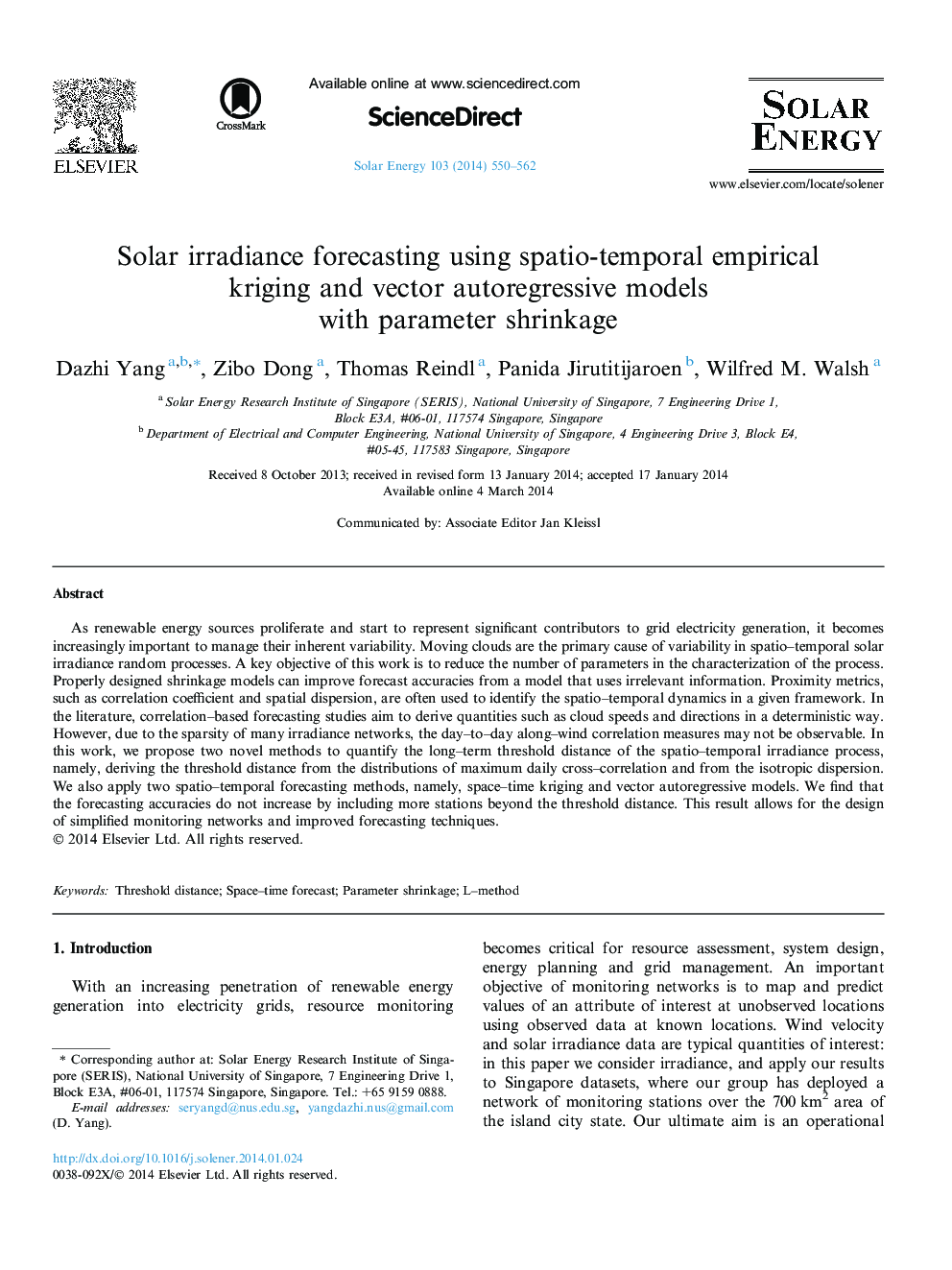| Article ID | Journal | Published Year | Pages | File Type |
|---|---|---|---|---|
| 7938395 | Solar Energy | 2014 | 13 Pages |
Abstract
As renewable energy sources proliferate and start to represent significant contributors to grid electricity generation, it becomes increasingly important to manage their inherent variability. Moving clouds are the primary cause of variability in spatio-temporal solar irradiance random processes. A key objective of this work is to reduce the number of parameters in the characterization of the process. Properly designed shrinkage models can improve forecast accuracies from a model that uses irrelevant information. Proximity metrics, such as correlation coefficient and spatial dispersion, are often used to identify the spatio-temporal dynamics in a given framework. In the literature, correlation-based forecasting studies aim to derive quantities such as cloud speeds and directions in a deterministic way. However, due to the sparsity of many irradiance networks, the day-to-day along-wind correlation measures may not be observable. In this work, we propose two novel methods to quantify the long-term threshold distance of the spatio-temporal irradiance process, namely, deriving the threshold distance from the distributions of maximum daily cross-correlation and from the isotropic dispersion. We also apply two spatio-temporal forecasting methods, namely, space-time kriging and vector autoregressive models. We find that the forecasting accuracies do not increase by including more stations beyond the threshold distance. This result allows for the design of simplified monitoring networks and improved forecasting techniques.
Related Topics
Physical Sciences and Engineering
Energy
Renewable Energy, Sustainability and the Environment
Authors
Dazhi Yang, Zibo Dong, Thomas Reindl, Panida Jirutitijaroen, Wilfred M. Walsh,
